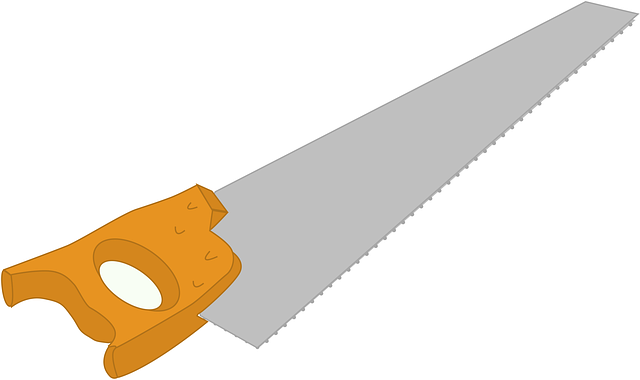DIY SEO Schema, particularly the HowTo JSON-LD format, is a powerful tool for web developers and content creators to optimize tutorial and recipe content. By incorporating structured data, rich snippets with images, ratings, and detailed instructions are displayed in search results, enhancing user experience and increasing click-through rates. This schema improves accessibility and visibility for voice search, making step-by-step guides more discoverable and engaging, ultimately benefiting both creators and search engines by enriching online content.
Discover how leveraging the HowTo schema can revolutionize your online content strategy. This powerful markup language enhances search engine visibility for step-by-step guides, boosting your website’s ranking with rich results featuring images and context. Learn to implement structured data effectively, attracting users seeking visual instructions. From optimizing for voice search to providing a better user experience, master the art of DIY SEO Schema for impressive online performance.
- Understanding DIY SEO Schema: The Basics
- HowTo Schema: Markup for Step-by-Step Instructions
- Enhancing Search Results with Visual Elements
- Incorporating Images: Tips and Best Practices
- Adding Instructional Context for Better User Experience
- Optimizing for Voice Search and Beyond
Understanding DIY SEO Schema: The Basics

Understanding DIY SEO Schema: The Basics
In today’s digital era, optimizing content for search engines isn’t just about words on a page—it involves structuring data in ways that make it easier for algorithms to understand and present relevant information to users. This is where DIY SEO Schema comes into play. At its core, DIY SEO Schema refers to the practice of marking up web content using structured data schemas, such as HowTo JSON-LD, to enhance search results with rich snippets that include images, star ratings, and detailed instructions.
By implementing Tutorial Schema Markup, you can transform your step-by-step guides into compelling visual displays that stand out in search result pages. This not only improves user experience by providing quick glances at the content but also boosts click-through rates, driving more traffic to your site. The Rich Result for HowTo schema is particularly effective for tutorials and recipes, making it a valuable tool for anyone looking to elevate their online content and stay ahead in competitive search landscapes.
HowTo Schema: Markup for Step-by-Step Instructions

The HowTo schema is a powerful tool designed to enhance the display of step-by-step content in search results. By using this schema, web developers and content creators can provide search engines with structured data that accurately represents instructional content, including DIY projects, recipes, or any process-oriented guide. This markup includes details such as the individual steps, required materials, and images to illustrate each stage, significantly improving user experience.
When implementing HowTo Schema, developers utilize JSON-LD (JavaScript Object Notation for Linked Data) to create a structured representation of the instructions. The schema provides fields for describing each step, ensuring that search engines understand the context and can display relevant snippets in search results. This SEO tagging technique not only makes content more discoverable but also encourages users to interact with the instructional material, leading to higher engagement rates and potentially improved rankings.
Enhancing Search Results with Visual Elements

In today’s digital era, search engines are evolving to better understand and display content that users find valuable and engaging. Enhancing search results with visual elements like images and instructional context is a game-changer for anyone looking to optimize their online presence, especially when it comes to DIY projects and step-by-step tutorials. By utilizing the HowTo schema, creators can ensure their content is marked up correctly, making it more visible and appealing in search results. This rich result for HowTo not only provides a structured breakdown of steps but also incorporates images and videos, providing a better user experience and increasing the likelihood of clicks and engagement.
The Tutorial Schema Markup and Schema for Guides are powerful tools that can transform basic content into dynamic, interactive experiences. By incorporating these visual elements, users are more likely to find what they’re looking for quickly and efficiently. This not only benefits individual creators but also search engines, as it allows them to deliver more relevant and diverse results, ultimately fostering a better online environment for everyone.
Incorporating Images: Tips and Best Practices

Incorporating high-quality images into your step-by-step content using DIY SEO Schema’s HowTo JSON-LD format enhances both user experience and search engine optimization (SEO). When structuring your guide, remember that visuals are powerful tools to break up text, highlight key steps, and provide context. Choose images that directly relate to the task at hand, ensuring they illustrate the process clearly. For instance, if you’re creating a “How-to Bake a Cake” guide, include photos of each mixing stage, the baked cake, and any decorative touches.
Best practices suggest optimizing these images for web use by compressing them without sacrificing quality to reduce page load times. Use descriptive file names and alt tags that reflect the content shown. For example, “cake_mixing.jpg” with an alt tag of “Mixing wet ingredients for a chocolate cake.” This not only aids accessibility but also provides search engines with valuable context, improving your schema’s effectiveness and boosting your guide’s visibility in search results using HowTo SEO Tagging techniques.
Adding Instructional Context for Better User Experience

Adding Instructional context enhances the user experience by providing a clearer understanding of what to expect from the content. When utilizing the HowTo schema, it’s crucial to include detailed descriptions that go beyond just listing steps. This involves describing the purpose and expected outcome of each step, especially for complex DIY projects. By enriching the content with such contextual information, users are better equipped to make informed decisions about the relevance and utility of the guide before even clicking through.
This instructional context plays a pivotal role in SEO as well, particularly for rich results. Search engines are designed to display informative and engaging snippets that offer a quick overview of what a user can expect from clicking on a result. By including relevant keywords naturally within this contextual description, you can improve the chances of your content being chosen for enhanced display, such as featured snippets or rich results for HowTo queries. This not only increases click-through rates but also fosters a better overall user experience.
Optimizing for Voice Search and Beyond

As voice search continues to gain popularity, optimizing content for this interactive query method is essential. The HowTo schema, with its detailed structure, plays a significant role in making your step-by-step tutorials accessible and understandable to both users and search engines. By implementing DIY SEO Schema, you enhance the visibility of your instructional content, ensuring it ranks higher in voice-activated searches. This strategy is particularly beneficial for those creating how-to guides or educational resources, as it allows potential learners to quickly find relevant answers without scrolling through lengthy pages.
Beyond traditional text-based searches, the Tutorial Schema Markup and HowTo SEO Tagging techniques ensure your content is future-proofed. These methods enable search algorithms to comprehend the hierarchical structure of your instructions, making it easier to deliver precise results tailored to users’ queries. Whether it’s a simple DIY project or an intricate guide, using Schema for Guides can significantly improve the overall user experience by providing context and relevant visual cues, such as images, directly within search results.
